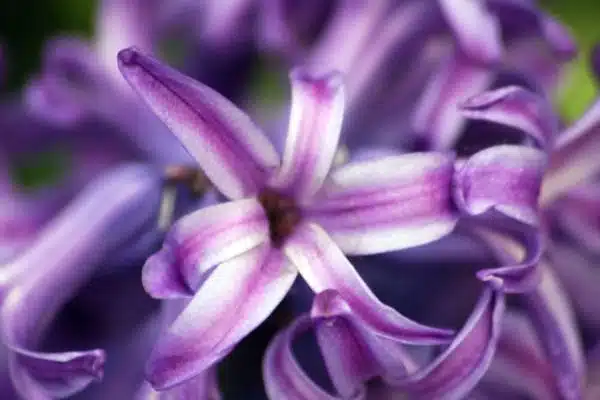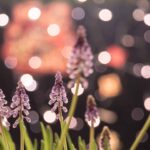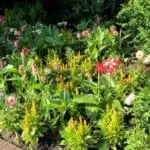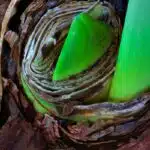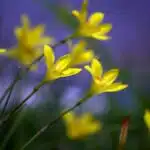Hyacinths are a popular spring-flowering bulb that produces fragrant and colourful blooms. These hardy plants are easy to grow and care for, making them a favourite among gardeners of all levels. However, like any plant, hyacinths require proper care before and after flowering to ensure their health and longevity.
In this hyacinth care guide, we will provide you with the essential information you need to know about caring for your hyacinths before and after they bloom. We will cover topics such as planting, watering, fertilizing, pruning, and much more. By following these simple steps, you can enjoy beautiful hyacinth blooms year after year while keeping your plants healthy and thriving. So let’s dive into the world of hyacinth care and discover how to cultivate these lovely flowers in your garden or home!
Understanding Hyacinth Growth Cycles
Hyacinths are beautiful and fragrant flowers that belong to the genus Hyacinthus. They are native to the Eastern Mediterranean region and have been cultivated for centuries. Hyacinth growth cycles consist of two main phases: vegetative and reproductive. Understanding these phases is essential for successful hyacinth care.
Hyacinth vegetative growth starts with planting bulbs in the fall, which undergo a process called vernalization during winter. During this time, bulbs need to be exposed to cold temperatures ranging from 35-50°F (1-10°C) for at least 12-14 weeks. This process stimulates the bulb’s internal chemistry, enabling it to develop roots, leaves, and flower buds in the spring. Hyacinth forcing is a technique used to speed up this process by exposing bulbs to warmer temperatures or artificial light.
Hyacinth reproductive growth occurs in the spring when leaves start growing taller, thicker, and greener. At this stage, hyacinths require good soil drainage and adequate sunlight exposure for optimal growth. One of the most popular hyacinth propagation techniques is dividing mature bulbs into smaller ones after flowering. This method helps maintain plant vigor and increases your garden’s overall beauty over time. In summary, understanding hyacinth growth cycles is crucial for every gardener looking to produce healthy plants with vibrant flowers year after year.
As you prepare your soil for planting hyacinths, keep in mind that they thrive best in well-draining soils enriched with organic matter such as compost or aged manure. Soil pH should range between 6-7 (slightly acidic). To improve drainage and prevent root rot diseases like Pythium or Phytophthora, consider adding sand or perlite to your soil mixture before planting. Finally, choose a sunny spot with at least six hours of direct sunlight daily and avoid areas where water accumulates easily after rainfall or irrigation events.
Preparing Your Soil For Planting
When it comes to cultivating healthy hyacinth plants, soil preparation is crucial. Whether you are planting bulbs for the first time or maintaining an existing garden bed, proper soil preparation will promote root growth and nutrient uptake. The key to successful soil preparation is understanding the nutrient requirements of your hyacinths.
Before planting hyacinths, it is important to test the pH and nutrient levels of your soil. Hyacinths thrive in slightly acidic soils with a pH range between 6.0 and 7.0. If your soil pH falls outside of this range, you may need to amend your soil with organic matter or lime to adjust the acidity level.
In addition to pH levels, hyacinths require adequate amounts of nitrogen, phosphorus, and potassium (NPK) for healthy growth. A balanced NPK fertilizer should be applied before planting and again after flowering has finished. Be sure to follow package instructions for proper application rates and timing.
| Nutrient | Function | Sources |
|---|---|---|
| Nitrogen (N) | Promotes leafy growth | Blood meal, fish emulsion |
| Phosphorus (P) | Stimulates root development and flower production | Bone meal, rock phosphate |
| Potassium (K) | Improves overall plant health and disease resistance | Wood ash, kelp meal |
As you prepare your soil for planting hyacinths, keep in mind that these plants prefer well-draining soils with ample organic matter. Compost or aged manure can be worked into the top few inches of soil prior to planting to improve structure and fertility. With proper soil preparation and nutrient management, you can cultivate vibrant and healthy hyacinth plants that will brighten up any garden space. In the next section, we will discuss choosing the right location for your hyacinth bulbs to ensure optimal growth and bloom performance.
Choosing The Right Location For Your Hyacinths
Now that you have prepared your soil for planting, it’s time to choose the right location for your hyacinths. Selecting the ideal site is crucial in ensuring that your plants thrive and produce beautiful blooms year after year. When selecting a location, consider the amount of sunlight, soil drainage, and exposure to wind.
Hyacinths prefer full sun but can tolerate partial shade. It’s best to select a spot where they will receive at least six hours of direct sunlight each day. The soil should be well-draining and rich in organic matter. If your soil is heavy clay or sandy, amend it with compost or aged manure before planting.
When choosing hyacinth bulbs, look for firm bulbs with no signs of mold or softness. Larger bulbs will produce larger blooms, so select the biggest bulbs you can find. Planting depth should be three times the height of the bulb, and spacing should be about six inches apart. Once planted, water thoroughly and cover with two inches of mulch to retain moisture and regulate temperature.
Transitioning into the subsequent section: Now that you’ve chosen the perfect location for your hyacinths, let’s dive into the next step – planting your bulbs!
Planting Your Hyacinth Bulbs
When selecting the ideal spot for a hyacinth plant, it is important to choose an area with well-drained soil, full sun, and protection from strong winds.
Plant the bulbs with their pointed end facing up, roughly 6 inches deep and 4-6 inches apart.
Cover the bulbs with soil, and water them well after planting.
Fertilize the soil at the time of planting, and again when the buds appear, to ensure that the hyacinths get the nutrients they need to thrive.
Choosing The Right Spot
Selecting the right location to plant your hyacinth bulbs is crucial for their growth and blooming. To ensure that your hyacinths thrive, choose a spot with well-draining soil and good exposure to sunlight. It is important to avoid areas with standing water, as this can cause the bulbs to rot. Hyacinths require at least six hours of direct sunlight per day, so select a site that receives ample light.
When planting your hyacinth bulbs, it is important to consider the location carefully. Choose an area that is protected from harsh winds and excessive rain, which can damage the delicate blooms. Additionally, make sure that the soil in your chosen spot is loose and fertile, allowing for proper drainage and nutrient uptake. If you are planting multiple bulbs, be sure to space them at least 6 inches apart to give each bulb enough room to grow.
Hyacinths are hardy plants that can tolerate a range of conditions, but selecting the right location will help ensure their success. By choosing a spot with well-draining soil and adequate sunlight exposure, you can create an optimal environment for these beautiful flowers to thrive. With careful consideration of these factors when planting your hyacinth bulbs, you can look forward to enjoying their fragrant blossoms year after year.
Planting The Bulbs
Planting hyacinth bulbs is an exciting and rewarding experience for any gardener. With a little bit of preparation, you can enjoy the beauty and fragrance of these stunning flowers in your own backyard. Before planting your hyacinth bulbs, it is important to consider some tips for successful planting. One of the most crucial factors to consider when planting hyacinth bulbs is choosing the right planting depth.
To ensure that your hyacinth bulbs grow successfully, it is important to plant them at the correct depth. A general rule of thumb is to plant bulbs at a depth that is two to three times their height. This means that if your bulb measures 2 inches in height, then you should plant it at a depth of 4-6 inches. Planting too shallow or too deep can prevent proper growth and blooming.
When planting your hyacinth bulbs, make sure they are positioned with their pointed end facing upwards. This will help ensure that the roots grow downwards and the stem grows upwards towards the sun’s rays. Additionally, be sure to water your newly planted bulbs thoroughly after planting, as this will help settle the soil around them and provide much-needed moisture for growth.
In summary, successful hyacinth bulb planting requires careful consideration of factors such as choosing the right planting depth and ensuring proper positioning during planting. By following these tips and providing care throughout their growing season, you can look forward to enjoying beautiful hyacinth blooms year after year in your garden or outdoor space.
Watering Your Hyacinths
Watering your hyacinths is an essential aspect of their overall care. Throughout the growing season, it’s crucial to keep a close eye on the moisture levels in your soil. Hyacinths are sensitive to overwatering and prefer well-draining soil that is kept moist but not waterlogged. Watering frequency will vary depending on the climate you live in, as well as the type of soil you have.
To ensure optimal growth, water your hyacinths when the top 1-2 inches of soil feel dry to the touch. During periods of heavy rainfall or if you have clay soil, be careful not to overwater your plants. Overwatering can lead to root rot and other problems that can weaken or kill your hyacinths. Conversely, underwatering can cause stunted growth and poor flowering.
In summary, watering frequency and soil moisture levels are critical factors in keeping your hyacinths healthy and beautiful throughout their growing cycle. Be sure to check the soil moisture regularly and adjust watering accordingly to avoid both overwatering and underwatering. In the next section, we will discuss how fertilizing can help promote strong growth and beautiful blooms in your hyacinth plants.
Fertilizing Your Hyacinths
Ensuring that your hyacinths receive proper nutrition is crucial to their overall health and longevity. Proper fertilization can make all the difference in the quality and quantity of blooms your hyacinths produce. Whether you choose organic or synthetic fertilizers, it’s important to understand how each option affects your plants.
Organic fertilizers are a natural choice for those who prefer to avoid chemicals in their garden. They are made from natural materials like composted manure, bone meal, or fish emulsion. These types of fertilizers work by slowly releasing nutrients into the soil over time. While they may take longer to show results, they provide a steady source of nutrition for your plants without risking chemical burn.
Synthetic fertilizers are made from chemically derived compounds that are designed to deliver a quick burst of nutrients to your plants. They can be very effective when used correctly but must be applied with care as they can easily cause damage if not used properly. It’s essential to read and follow the instructions carefully when using synthetic fertilizers to ensure optimal results without causing harm to your plants.
As you consider which type of fertilizer is right for you and your hyacinths, keep in mind that both options have their pros and cons. Organic fertilizers offer a more natural solution that won’t harm the environment or pose any health risks. Synthetic fertilizers may provide faster results but require more caution when applying them. Whatever you choose, always remember to follow the manufacturer’s instructions closely and apply according to the recommended schedule for best results. In our next section, we will discuss staking and supporting your hyacinths so that they remain strong throughout their growth cycle.
Staking And Supporting Your Hyacinths
As your hyacinths grow taller, they may need some extra support to keep them from falling over. Staking your hyacinths is a great way to hold them up and keep them growing in the right direction. There are different types of stakes you can use, such as bamboo sticks or metal rods. Make sure the stake is long enough to reach the bottom of the bulb and at least 8 inches above the ground. Insert the stake about 3-4 inches away from the stem and gently tie it with twine or soft garden tape.
Natural supports are also an option for your hyacinths. You can plant them near a fence, wall, or trellis that they can lean against as they grow. Alternatively, if you have other plants nearby with sturdy stems, your hyacinth stems can grow between those plants and use them for support. However, make sure not to overcrowd your plants as this could lead to disease or pest problems.
Remember to check on your staked or supported hyacinths regularly and adjust ties or stakes as necessary. This will ensure that they continue to grow upright without causing any damage to the stem. In addition, it is important to prune your hyacinths after flowering to maintain their health and stimulate new growth.
Pruning your hyacinths after flowering involves removing spent flowers but leaving the foliage intact until it turns yellow and dies back naturally. This allows the plant to store energy in its bulb for next year’s growth cycle. To remove spent flowers, simply cut off the entire flower stalk using sharp scissors or pruning shears. Be careful not to cut off any leaves during this process as they are responsible for producing food through photosynthesis. By pruning your hyacinths after flowering, you’ll be rewarded with healthy bulbs that will produce beautiful blooms year after year!
Pruning Your Hyacinths After Flowering
Pruning is an important post-flowering maintenance technique for hyacinths. Proper pruning helps to promote healthy growth and prevent the spread of pests and diseases. When pruning your hyacinths, it is important to remove only the spent flower heads and avoid cutting off any leaves or stems.
One effective technique for pruning your hyacinths is deadheading. Deadheading involves removing the spent flower heads before they have a chance to form seeds. This encourages the plant to put its energy into producing new growth rather than seed production. To deadhead your hyacinth, use a pair of sharp scissors or garden shears to snip off the faded flower head just above the stem.
Another pruning technique that can help maintain healthy growth in your hyacinth is cutting back the foliage after it has yellowed and withered. This allows the plant to focus its energy on storing nutrients in its bulbs for future growth rather than trying to sustain dying leaves. To cut back the foliage, use a pair of clean, sharp scissors or garden shears to snip off any yellowed or withered leaves at their base near the soil line.
Now that you know how to properly prune your hyacinths after flowering, you can help promote healthy growth and prevent pest and disease problems. But proper pruning alone may not be enough to keep your plants healthy. In the next section, we will discuss some additional steps you can take to prevent common pest and disease issues that may affect your hyacinths.
Preventing Pests And Diseases
Identifying pests early is crucial in preventing damage to your hyacinths. Common pests that may attack hyacinths include aphids, thrips, and slugs. Aphids are small, soft-bodied insects that suck sap from plants, causing yellowing of leaves and stunted growth. Thrips are tiny insects that feed on flower buds, causing them to turn brown and fail to open properly. Slugs, on the other hand, feed on the leaves of hyacinths and can cause significant damage if left unchecked.
To prevent pest infestations, it is important to maintain good hygiene in your garden. Remove any dead plant material or debris that may harbor pests. Regularly inspect your hyacinths for any signs of infestation such as holes in the leaves or distorted growth. In severe cases, you may need to use insecticides or other pest control measures to eliminate the problem.
Treating diseases is also crucial in maintaining healthy hyacinths. Hyacinths are susceptible to fungal diseases such as gray mold and bulb rot. Gray mold appears as a fuzzy gray coating on foliage and flowers while bulb rot causes decay of the bulb itself. To prevent these diseases, ensure good air circulation around your plants by spacing them appropriately. Avoid overwatering your hyacinths as this can lead to fungal growth. If disease does occur, remove affected plant parts immediately and dispose of them properly to prevent further spread of the disease.
As a responsible gardener, identifying pests early and treating diseases promptly will help keep your hyacinths healthy and beautiful year after year. However, prevention is always better than cure so be sure to maintain good garden hygiene practices at all times. In the next section we will discuss how dividing and transplanting your hyacinths can help ensure their longevity in your garden.
Dividing And Transplanting Your Hyacinths
Propagation methods for hyacinths include dividing and transplanting the bulbs. This process is typically done in the fall after foliage has died back, but can also be done in the spring before new growth begins. Dividing and transplanting is important to maintain healthy plants, as overcrowded bulbs can result in poor flowering and disease.
To divide your hyacinths, start by digging up the bulbs with a garden fork or spade. Gently remove any excess soil from the bulbs and separate them into individual units. Each bulb should have at least one mature leaf attached to it. Be sure to discard any damaged or diseased bulbs. Once divided, you can either replant them immediately or store them until planting time.
Optimal timing for transplanting hyacinths is in the fall when temperatures are cooler and moisture levels are higher. Choose a location that receives partial to full sun exposure and has well-draining soil. Dig a hole deep enough so that the top of the bulb will be just below ground level. Space each bulb about 4-6 inches apart for optimal growth. Water thoroughly after planting and add a layer of mulch to protect against frost.
As winter approaches, it’s important to prepare your hyacinths for overwintering. This involves protecting them from cold temperatures and excessive moisture. Cover your plants with a layer of straw or leaves before the first frost hits. Mulching around your plants can also help retain moisture during dry winter months. With proper care, your hyacinths will thrive year after year!
Overwintering Your Hyacinths
Now that you have successfully divided and transplanted your hyacinths, it is essential to prepare for the upcoming winter months. Overwintering preparation involves several steps to ensure that your plants remain healthy and ready for blooming in the next season.
One of the most crucial aspects of overwintering preparation is storing your hyacinth bulbs correctly. You can store them in a cool, dark place with good ventilation, such as a basement or garage. Make sure to remove any dead or decaying foliage before storage to prevent disease and pests from spreading.
There are also different storage techniques you can use, such as storing bulbs in mesh bags or paper bags with peat moss or vermiculite. Whichever method you choose, make sure to label each bag with the name of the hyacinth variety and its planting date. With proper storage techniques, your hyacinths will be ready for planting again in the spring.
As you prepare for propagating hyacinths from bulbs or seeds, it’s important to remember that patience is key. It may take several years for your new plants to reach their full potential and bloom fully. However, with proper care and attention, you can enjoy a beautiful garden filled with fragrant blooms year after year.
Propagating Hyacinths From Bulbs Or Seeds
Propagating hyacinths from bulbs is relatively easy and can be done with the right knowledge and tools. The most important step is to make sure the bulbs are of the highest quality, as this will determine the success of the propagation. Propagating hyacinths from seeds is a bit more difficult, but also possible with the right knowledge and tools. When propagating from seeds, the most important step is to ensure that the seeds are fresh and viable.
Propagating Bulbs
Propagating bulbs is an effective way to multiply your hyacinth plants. This process involves separating the bulb offsets produced by the mother plant and planting them in a new location. To begin, it is important to wait until after the foliage has died back and the bulbs have gone dormant before digging them up. Once you have done so, separate the small bulbs or offsets from the larger ones, making sure that they have their own roots intact.
When replanting these offsets, it is crucial to choose a location with well-draining soil and full sun exposure for optimal growth. Dig holes that are about 4-6 inches deep and place each offset in with its roots facing downwards. Cover them with soil and water thoroughly to encourage root development. It may take up to two years for these new plants to bloom, but with proper care, they will eventually produce beautiful flowers.
Propagation techniques can vary depending on your preferences as a gardener. Aside from separating offsets, you can also propagate hyacinths through scales or seeds. Growing tips for propagating through scales involve removing individual scales from a bulb and planting them in a potting mix until they develop into small bulbs that can be transplanted into your garden or container. On the other hand, propagating through seeds involves collecting mature seed pods after flowering season and sowing them in pots indoors during autumn for springtime blooming outdoors.
In summary, propagating hyacinths from bulbs requires patience and attention to detail but ultimately serves as a rewarding experience for any gardener looking to expand their collection of these fragrant blooms. Whether choosing to separate offsets or experiment with different propagation techniques such as scaling or seed sowing, following proper growing tips will ensure successful growth for these versatile plants all year round.
Propagating Seeds
Moving on to the next subtopic, propagating hyacinths from seeds is another method that can yield beautiful blooms. Growing hyacinths from seeds is a great way to experiment with crossbreeding techniques and produce unique variations of these fragrant flowers. To start, wait for the seed pods to mature after the flowering season and collect them once they have turned brown. It is important to note that seeds produced from hybrid plants may not be true to their parent plant, so expect some variation in your results.
To propagate hyacinths from seeds, begin by sowing them indoors during autumn using a potting mix with good drainage. Place the pots in a bright, sunny location and keep the soil moist but not waterlogged. Germination usually occurs within 4-6 weeks, after which you can transplant the seedlings into larger pots or your garden once they have developed strong roots and leaves.
Growing hyacinths from seeds requires patience and attention to detail but can be an exciting process for any gardener looking to experiment with different crossbreeding techniques. By following proper growing tips such as using well-draining soil and providing adequate sunlight and moisture, you can enjoy beautiful blooms throughout the spring season.
Using Hyacinths In Flower Arrangements
Like a painter’s palette, the hyacinth offers an array of vivid colors that can be used to create stunning flower arrangements. The key to creating a beautiful arrangement is selecting the right color combinations and arranging techniques. With some planning and creativity, you can turn a simple bouquet of hyacinths into a work of art.
When it comes to arranging hyacinths, one popular technique is to group them together in clusters of the same color. This creates a bold statement and draws attention to the beauty of each individual bloom. Mixing different shades of the same color can also add depth and interest to an arrangement. For example, pairing light pink with dark pink hyacinths creates a subtle ombre effect.
Another way to arrange hyacinths is by combining them with other flowers or foliage. White hyacinths pair well with greenery for a classic look, while purple hyacinths can be paired with yellow daffodils for a vibrant springtime display. Don’t be afraid to experiment with different combinations until you find one that suits your taste.
When selecting colors for your arrangement, consider the mood you want to convey. Blue and purple hues are calming and serene, while pink and red are more energizing and passionate. Yellow and orange evoke feelings of happiness and sunshine. By playing around with color combinations and arranging techniques, you can create an arrangement that reflects your personality and style.
Transition: Now that we’ve covered some basic arranging techniques and color combinations, let’s take a closer look at common hyacinth varieties and colors.
Common Hyacinth Varieties And Colors
Using hyacinths in flower arrangements can add a touch of elegance and sophistication to any occasion. These beautiful flowers come in a variety of colors and are known for their strong fragrance, making them a popular choice among florists and homeowners alike. However, caring for hyacinths before and after they bloom is essential to ensure their longevity and continued beauty.
One important aspect of hyacinth care is understanding their symbolism. These flowers have long been associated with rebirth, springtime, and new beginnings. In Greek mythology, the hyacinth was a symbol of Apollo’s grief over the loss of his lover, Hyakinthos. Understanding the significance of these flowers can help you appreciate them even more as you care for them.
Another important aspect of hyacinth care is managing their fragrance. While many people love the sweet scent that these flowers emit, others may find it overpowering or even irritating. To manage the fragrance of your hyacinths, consider keeping them in a well-ventilated area or using them in small amounts within arrangements.
Understanding how to care for your hyacinths both before and after they bloom can help ensure that they remain healthy and vibrant for as long as possible. From managing their fragrance to appreciating their symbolism, there are many ways to enjoy these beautiful flowers throughout the year. In the next section, we will explore common varieties and colors of hyacinths so that you can choose the perfect blooms for your needs. But first, let’s take a look at some common problems that may arise when caring for hyacinths and how to troubleshoot them effectively.
Troubleshooting Common Hyacinth Care Problems
Hyacinths are a beautiful addition to any garden or indoor space, but unfortunately, they are susceptible to various diseases and pests. Identifying these issues early on is crucial for successful hyacinth care. One of the most common problems is fungal diseases, which can cause brown spots on leaves and stems. To treat this, remove infected parts of the plant and apply a fungicide. Another issue is viral infections, which cannot be treated and require removal of the affected plant.
Pests such as aphids and spider mites can also cause problems for hyacinths. These insects suck sap from the plant, causing stunted growth and yellowing leaves. To combat these pests, use insecticidal soap or neem oil. It’s important to regularly inspect your plants for signs of infestation so that you can address the problem before it spreads.
Soil pH and nutrient balance are also critical factors in hyacinth care. These plants prefer slightly acidic soil with a pH range of 6-7. Additionally, they require balanced nutrients such as nitrogen, phosphorus, and potassium for healthy growth. Test your soil regularly using a pH meter or testing kit, and adjust accordingly by adding amendments such as lime or compost.
Incorporating proper pest management techniques and maintaining optimal soil conditions are key to preventing disease and promoting healthy growth in your hyacinths. By identifying potential issues early on and taking appropriate action, you can enjoy these stunning flowers year after year without sacrificing their beauty or health.
Frequently Asked Questions
How Do I Store Hyacinth Bulbs If I Want To Plant Them At A Later Time?
Storing hyacinth bulbs for future planting requires careful preparation to ensure that they remain viable. After the flowering period has ended, it is important to allow the foliage to yellow and wither naturally before cutting it back. Once the foliage has died back, carefully dig up the bulbs, being careful not to damage them, and remove any excess soil or debris. The bulbs should then be stored in a dry and cool place, such as a paper bag or mesh container, with good air circulation. It is essential to monitor the bulbs regularly for any signs of rot or mold and discard any that appear to be damaged. When ready to plant again, use high-quality potting soil and ensure that the bulbs are planted at a depth of around three times their height. With proper storage and planting techniques, your hyacinth bulbs can thrive for many seasons to come.
Can I Plant Hyacinths Indoors In A Container Instead Of Outside In The Garden?
Indoor planting of hyacinths in a container is an excellent option for those who wish to enjoy the beauty and fragrance of these flowers year-round. Indoor planting tips include using well-draining soil, placing the container in a bright location with indirect sunlight, and keeping the soil moist but not waterlogged. Container options range from traditional clay pots to modern glass containers that showcase the bulbs’ roots. Indoor planting of hyacinths allows for greater control over the growing conditions, resulting in healthier plants and longer-lasting blooms. With proper care and attention, your indoor hyacinths will bring joy and beauty to your home for months on end.
How Long Do Hyacinth Flowers Typically Last Once They Bloom?
Hyacinth flowers typically last for about two to three weeks once they bloom. However, there are ways to prolong their beauty and fragrance. One tip is to keep them in a cool room with indirect sunlight and away from drafts. Another way is to change the water in their vase daily and trim the bottom of their stems every few days. As for displaying hyacinths in arrangements, they look best when grouped together in a single color or mixed with other spring blooms such as tulips and daffodils. Hyacinths also make great cut flowers as they continue to open up over time, creating a stunning display that will brighten up any room. By following these tips, you can enjoy your hyacinth blooms for even longer and create beautiful arrangements that will delight yourself and others.
Are There Any Companion Plants That Go Well With Hyacinths?
When planting hyacinths, it is important to consider companion planting benefits. Certain plants can not only enhance the aesthetic appeal of your garden, but they can also help support the growth of your hyacinths. The best companion plants for hyacinths include daffodils, tulips, and grape hyacinths. Daffodils and tulips share similar soil and sunlight requirements with hyacinths, while grape hyacinths can add a delightful contrast in color and height. When choosing companion plants, it is important to consider their compatibility with hyacinths and their overall growth habits. Remember the old saying “birds of a feather flock together,” as this applies well to companion planting – pairing plants that complement each other will create a harmonious and thriving garden environment.
Can I Use Hyacinth Bulbs From Last Year To Plant This Year, Or Do I Need To Buy New Bulbs Each Year?
Using old hyacinth bulbs for planting is possible, but the success rate may vary. Bulbs that have been stored properly and are firm to the touch can still be used for planting. However, it should be noted that older bulbs tend to produce smaller blooms and fewer flowers. To rejuvenate old hyacinth bulbs, they can be soaked in warm water overnight before planting or treated with a bulb fertilizer to boost their nutrient levels. It is important to remember that hyacinth bulbs should not be planted in the same spot every year as this can lead to soil depletion and disease buildup. Therefore, it is recommended to rotate planting locations or replace older bulbs with new ones every few years for optimal growth and performance.
Conclusion
Hyacinths are beautiful and fragrant flowers that require proper care, both before and after flowering. If you want to plant hyacinth bulbs at a later time, make sure to store them in a cool and dry place. Planting hyacinths indoors is also an option if you don’t have space in your garden. Once hyacinths bloom, they typically last for a few weeks before fading away.
Companion plants such as tulips and daffodils can complement the beauty of hyacinths, while marigolds and lavender can help repel pests from the area. When it comes to planting new bulbs, it’s best to purchase fresh ones each year instead of reusing old ones.
In conclusion, taking care of hyacinths requires attention to detail and the right conditions. From storing bulbs correctly to choosing suitable companion plants, there are many factors to consider when growing these lovely flowers. With proper care, however, your hyacinths will bloom gloriously and fill the air with their sweet fragrance – truly a sight to behold!
Image Credits
- “Purple Hyacinth” by Recherché Furnishings (featured)

